
Abstract
This paper examines the impact of recent criminal justice reforms enacted at the end of the Obama Administration, specifically the changes to drug sentencing guidelines enacted by the United States Sentencing Commission (USSC) and the United States Department of Justice (DOJ) Clemency Initiative, both of which were announced in 2014. It discusses the real, often overlooked, needs of people being released from prison after long decades behind bars, and the role of formerly incarcerated people in helping with transition from prison. It draws upon a demonstration project, Project New Opportunity (PNO), a program developed to assist people released under Clemency Initiative and other federal sentencing reforms. The Obama era actions illustrate the tension between the modest criminal justice reforms that bring a modicum of relief to incarcerated people, while keeping intact the fundamental policies and practices that create and sustain mass incarceration. The article is informed by a survey of people who participated in PNO and a series of video-taped interviews with co-author Norman Brown, the project’s deputy director, who was granted clemency and released after serving 24.5 years in federal prison.Introduction
After one has been in prison, it is the small things that one appreciates: being able to take a walk whenever one wants, going into a shop and buying a newspaper, speaking or choosing to remain silent. The simple act of being able to control one's person.—Nelson Mandela 1995, 253
Nelson Mandela wrote these words as he reflected on his release from a six-month prison sentence he served in 1961. He would undoubtedly experience these emotions more profoundly in 1990 when released from 27 years of incarceration in South Africa. Every year, hundreds of thousands of people throughout the United States are released from prison and face what Nelson Mandela called “the small things.” This is but one of the results of the United States’ pathological reliance on incarceration, which leaves over two million people a year behind bars.1 Mass incarceration is characterized by churning: each year almost the same number of people are admitted to prison as are released—over 600,000 and many of those [re]admitted to prison are not there for having committed a new crime, but rather for “technical,” i.e., noncriminal violations of the terms of their release (Carson 2018).
The largest one-day release of incarcerated people in United States history came on November 1, 2015, when about 6,000 people incarcerated in federal prisons were released to the community as a result of the changes in the federal sentencing guidelines, a grid that directs judges as to the appropriate sentence for various crimes. Specifically, in April 2014, the US Sentencing Commission (USSC)2 unanimously approved a two-level reduction in the drug sentencing guidelines and in July of that year made the changes retroactive.3 Amendment 782, known as “Drugs Minus Two,” shortened the length of time that people convicted of federal drug crimes would have to spend in prison by an average of 11 months. These changes became effective in the following year (November 2015) by which time 6,000 people were immediately eligible for immediate release.4
Drugs Minus Two sentence reductions are part of what has become a bipartisan effort to rethink, albeit modestly, America’s overreliance on incarceration and the particular deleterious impact on communities of color.5 The Commission’s reduction of drug sentencing guidelines garnered considerable public support from judges, advocates, other criminal justice professionals, and people directly impacted by federal sentencing guidelines. While most law enforcement groups tended to oppose guideline reductions, some police and prosecutor associations also supported the Drugs Minus Two amendment.
The 2014 Obama Administration Clemency Initiative is another example of changing public opinion about America’s criminal justice system. The initiative was limited in scope, available to a small number of individuals who met stringent eligibility criteria. Only those who were convicted for a nonviolent crime, had a limited prior criminal history, demonstrated good conduct in prison, and had served at least 10 years in prison were even eligible to apply. PNO Deputy Director and coauthor Norman Brown was one of those fortunate to be selected for clemency. Norman was released in 2015 after serving more than 20 years in federal prison: his video interviews and insights inform this article. By the close of his term in 2017, President Obama had granted more clemencies than any other president in US history—1,023.6 While historically high, this represented only five percent of the individuals who even applied for clemency and considerably less than one percent of the federal prison population.
Nonetheless, the Drugs Minus Two and Obama Clemency Initiative represent an experiment with early release. This article explores one aspect of this “test” of early release—how people returning home after long stays in [federal] prison make the transition and specifically why formerly incarcerated people are important to the reentry process. We draw on the experience of Project New Opportunity (PNO), a demonstration project developed in 2015 in response to the vacuum in reentry support for people released through clemency and the Drugs Minus Two sentencing reduction. We place efforts to shorten sentences through back-end maneuverers such as Drugs Minus Two and Clemency within the context of discussions and debates about ending mass incarceration, including the need for “front-end sentencing” reform, the challenges of reentry, and the role of incarcerated people in leading the struggle to transform America’s carceral state.
Criminal Justice Reforms: Promise, Rhetoric, and Reality
Criminal justice reform—at the state and federal levels—has been agonizingly slow and feeble. The modest reforms of recent years still leave the United States with the notorious reputation for imprisoning the greatest percentage of its people and specifically people of color. With but 5 percent of the world’s population, the United States has 25 percent of the world’s incarcerated people. There are stark racial disparities, particularly for blacks who make up 40 percent of people incarcerated but are only 13 percent of the US population.
The macro causes of mass incarceration are embedded within structural forces of global capitalism and historical conditions of racism. The US carceral state has subsumed the welfare state as a response to the social and economic needs of its most marginalized population, a population that is excluded from an ever-shrinking job market (Western and Pettit 2000; Western and Beckett 1999; Wacquant 2009). It is the mechanism to contain and disenfranchise communities of color, the latest in a long line of venal racism that includes slavery, the Black Codes, and Jim Crow. It has become the dog whistle of American politics reminding (white) voters what is at stake in elections (Simon 2007; Mendelberg 2001).
Specific criminal justice policies are the micro causes of mass incarceration. While there are many causes, the “War on Drugs” combined with increasingly harsh sentencing policies are most often pointed to as the causes of the astonishing growth in the US prison population. The Drug War and the federal sentencing guidelines transformed the federal prison system from almost an afterthought in the overall US criminal justice system to the largest prison system in the country. The number of people in federal prison increased from 24,263 in 1980 to 187,489 in July 2017, an increase of 670 percent (see Fig. 1 below).7 The drivers of this astronomical increase were the federal sentencing guidelines as well as mandatory minimums. People who would have once received probation sentences found themselves sentenced to prison due to guideline requirements (Wolf and Weissman 1996).

The length of prison sentences also increased. The average time served by federal prisoners doubled between 1988 and 2012, increasing from just under 18 months to 37.5 months (Pew Charitable Trusts 2015).
Decades of advocacy campaigns about the harsh and aberrational criminal justice policies, along with the unsustainable costs of mass incarceration, opened the door for the modest federal drug sentencing reforms and the Clemency Initiative. Yet from the standpoint of ending mass incarceration, these changes are incremental in approach and effect, leaving the United States' overreliance on the criminal justice system and its racist effects intact. These modest changes do, however, offer an opportunity to consider the process of leaving prison and what role formerly incarcerated people can play in this journey.
It is no secret that reentry is hard: the USSC itself delayed the effective date of actual releases from 2014 to November 2015 in order to give the Bureau of Prisons and the US Office of Probation and Pretrial Services time to prepare for the release of people freed under the Drugs Minus Two retroactivity provision. Yet, by the time the prison doors opened for the thousands of people who qualified for early release, only the routine elements of halfway houses8 and supervised release were available to greet them.
The dearth of reentry supports for thousands of people released through the retroactive application of guideline reductions is particularly surprising given that “reentry” has been the most popular of criminal justice reforms. As the reality of the long-term consequences of mass incarceration, including the almost 600,000 people released from prisons each year, dawned on policy makers, the so-called reentry movement was able to gain bipartisan consensus and the attention of funders and service providers. In the spring of 1999, a seemingly simple question then Attorney General Janet Reno posed to Jeremy Travis, then director of the National Institute of Justice, “What are we doing about all the people coming out of prison?” placed reentry on the political agenda (Suellentrop 2006). Parole was increasingly recognized as ineffective, more a conduit to return to prison rather than a mechanism to help formerly incarcerated people return home.9 Needing a new language to talk about this problem, Travis began referring to it as the issue of prisoner reentry or, simply, reentry (Travis 2005).10 He defined reentry as a “new approach,” as distinct from other criminal justice efforts, as follows:
[Prisoner reentry] is community based, involves new entities such as intermediaries or courts in reentry management, and explicitly uses social service agencies as boundary-spanning institutions that reach behind the prison walls and work together to ease the difficulties of the transition to community. (Travis 2007, 85)
The focus of reentry was primarily on employment, job training, and substance abuse services, with some attention to housing and health and mental health concerns (Travis 2005).
In his 2004 State of the Union address, President George Bush famously endorsed the concept of reentry with the romantic statement that “America is the land of second chances.” Criminal justice reform advocates latched on to this phrase like wanderers in a desert, finally reaching an oasis. There was at long last a glimmer of recognition on the part of policy makers that something was amiss in America’s criminal justice system. While neither tackling root causes related to poverty and race nor the fundamental sentencing policies that fill prisons with the most marginalized people in America, reentry was at least an opening to put a more human face on and a humane approach to formerly incarcerated people. The Second Chance Act (SCA) was signed into law in April 2008, authorizing federal grants to state and local entities to introduce reentry program models. A first-year appropriation of $25 million in 2009 quadrupled to $100 million in 2010.
Much like reactions to the modest sentencing reforms of the past decade, advocates for substantive criminal justice reform face a dilemma about whether and how to support the popularized “reentry movement.” On the one hand, reentry as a criminal justice reform is a reaction to the deleterious effects of mass incarceration, but leaves the basic structure of the US criminal justice system intact, doing little, if anything, to challenge the punitive crime control policies that push people into prisons in the first place. To the extent there is a recognition that social welfare policies and practices have a role to play in crime and justice, those considerations are placed at the back end, after someone has already spent years in prison. Loïc Wacquant challenges the reentry movement for failing to capture the reality that “. . . the vast majority of former convicts experience not reentry but ongoing circulation between the two poles of a continuum of forced confinement formed by the prison and the dilapidated districts of the dualizing metropolis. . .” (Wacquant 2010, 611). Yet standing side by side with these insightful critiques of reentry is the reality that people leaving prison themselves acknowledge the need for support in making the transition from years ensconced in a harsh total institution. However, the kind of support valued by many directly impacted people is not just about social service supports, but how to manage the mundane, everyday routines of life—what Nelson Mandela called “the small things.”
Leaving Prison: The Shock of Reentry
Prison life is characterized by limited opportunities to develop and maintain close personal relationships where even human touch between family visitors and prisoners is proscribed and surveilled. Imprisonment is highly regimented; incarcerated people have limited personal responsibility to take care of basic human needs—food, clothing, and shelter. Prison is a gruesome environment characterized by constant noise, pervasive violence, little to no access to green space or soothing environs. Haney (2003) identifies myriad psychological impacts of incarceration that affect post-release adjustment: overdependence on regulation that limits individual decision-making capacity, hypervigilance and suspension, social withdrawal, and post-traumatic stress responses to what may be routine incidents in daily life. After serving 20 years of a 40–60-year sentence in Michigan, Jerry Metcalf (2018) provides a disturbing description of what becomes “normalized” in prison: “methodical shame and humiliation,” replacement of identity with a number, “fleeting friendships,” “chaos,” “violence,” “growing accustomed to having everything we do planned out and tracked by authority figures.” Metcalf writes: “I’m told when to eat, when to sleep, when to go outside, when to talk with and see my family, when to shower, when to cut my hair or iron my clothes.” This statement by Mr. Metcalf captures the impact of incarceration: “I can’t remember the last time I had to make a major decision like that for myself. I grow nervous just imagining the prospect. . . . Maybe this is why so many of us fail when we get out.”
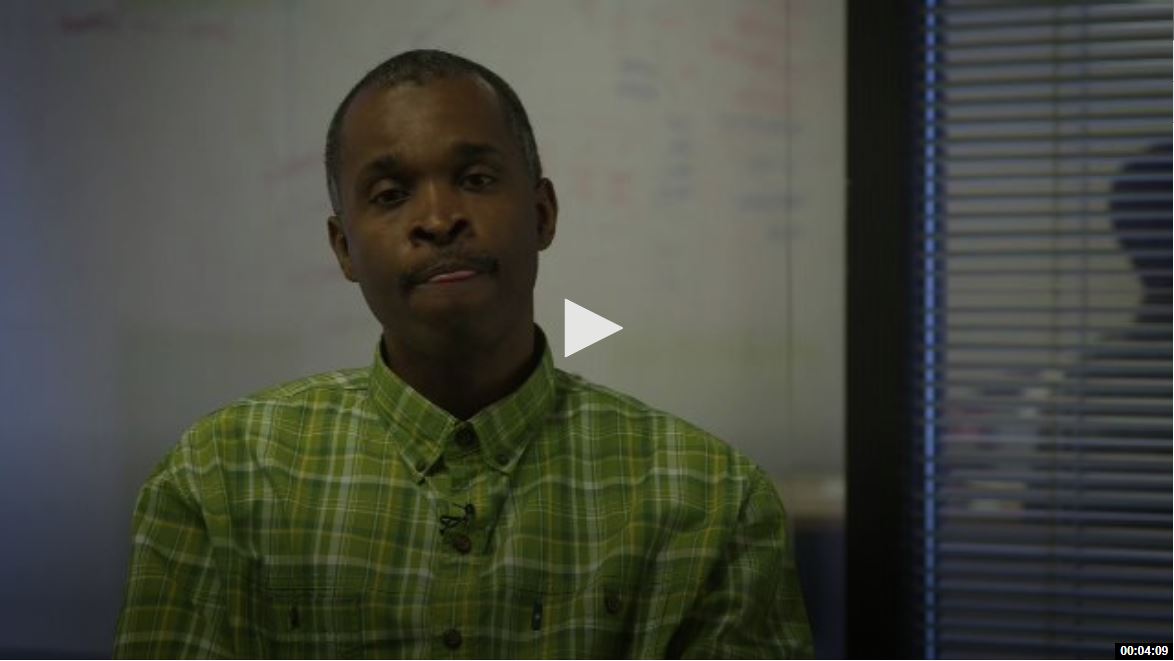
Figure 2: Introduction to Norman Brown: Twenty-two years old, facing three life sentences. Joe King, Videographer.
While many heroically survive and try to make the best of these abnormal, often inhuman conditions, release back to the “free world” is nothing less than culture shock. Adjustment issues are critical to address, particularly in the immediate pre- and post-release time periods. Data show that recidivism (as defined by rearrest) is concentrated in the first six months post-release with more than one-third of releasees arrested within that time period (Durose, Cooper, and Snyder 2014). As Jonson and Cullen (2015) assert, the high rates of recidivism that occur shortly after release indicate that “basic knowledge about reentry is lacking” (25).
People who have gone through the experience of being released from prison speak of being befuddled and embarrassed by common, everyday tasks such as when they ask where to buy a token for the New York City subway, not realizing that during the decades of being locked up, tokens were replaced by MetroCards. They see people speaking on cell phones and believe either that there has been a spike in the number of mentally ill people talking to themselves or that a cell phone is a mechanism to monitor his/her movements in the community. Then there is the experience of Ray: 2 days out from having served a 32-year sentence, Ray was walking down a hallway and saw someone walking right at him. In his prison world, such behavior could be interpreted as a provocation. Ray worried that he would have to defend himself and wind up right back in prison. It was not until he got closer to the figure that he realized he had been walking toward himself in a full-length mirror: he had not seen himself in such a mirror in 32 years! Ray’s dislocation from the “free world” was not limited to full-length mirrors. He was initially unable to go outside of his house as he felt himself to be so marked by the prison experience as to be recognized by anyone he might encounter on the street.
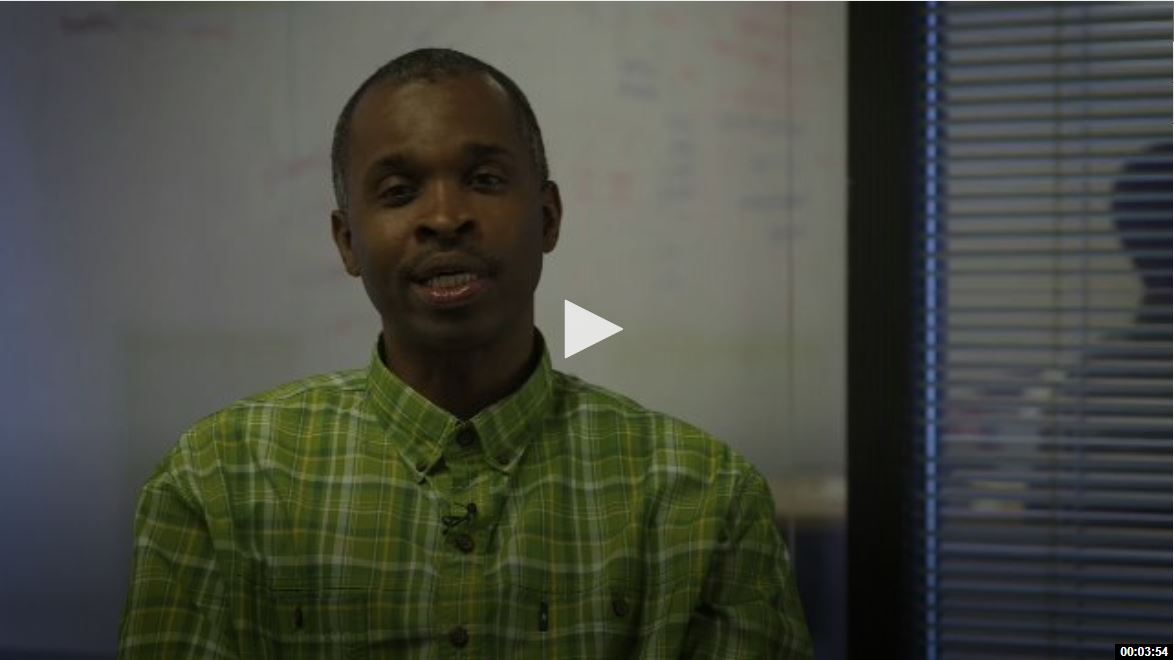
Figure 3: It’s all new, it’s all unrecognizable: Release from prison after 24 years. Joe King, Videographer.
Yet reentry programs generally do not address these sorts of dislocation and shocks. Rather, reentry programs funded by the Second Chance Act and other public and private sources have as their focus the development of instrumental skills that formerly incarcerated people can use to achieve a modicum of social and economic subsistence. For example, US Department of Labor funding supports programs that provide job training and placement for formerly incarcerated people; Health and Human Services funding supports specialized drug treatment and recovery programs for people leaving prisons. However, missing from the well-intentioned programs were and are initiatives that address the uniquely disruptive and disorienting impact of incarceration, as well as the structural conditions and collateral consequences that make returning home a confounding and defeating experience.
A growing body of research focusing on reentry from prison from the vantage point of the formerly incarcerated person (Western 2018; Trimbur 2009) describes the overwhelming and often overlooked individual and social conditions they face. Formerly incarcerated people present the starkest face of poverty in the United States. A web of individual conditions from psychological devastation from years of incarceration to material deficits including a lack of housing, poor health, and limited education and employment skills interact with structural social and economic conditions, notably the absence of jobs and racism. While these less observable challenges in transition are not wholly unique to formerly incarcerated people11, barriers known as collateral consequences uniquely solidify the social exclusion of this stigmatized group.
The framework of government-sponsored reentry programming was and remains predominantly one of “rehabilitation” through “treatment interventions.” However, in the past decade, a growing number of formerly incarcerated people have been redefining how reentry work is done and what it means to align this work more closely with their own lived experiences. Maruna (2017) and others call this “the desistance perspective” that focuses on the importance of personal relationships with family, community members, and formerly incarcerated people to cushion the reentry process. Unlike the rehabilitation framework that defines formerly incarcerated people as broken and needing to be fixed, desistance has a strength-based orientation. Moreover, reentry has taken on the character of a social movement, led by formerly incarcerated people (Maruna 2017).
An integral part of the desistence paradigm is the role played by formerly incarcerated people as reentry guides for soon-to-be and just-released people. While the engagement of directly impacted communities has a long history in arenas such as mental health and sobriety from alcohol and public health12, this has not been the case for people with criminal justice system involvement. The über-stigmatization of formerly incarcerated people results in their lifetime social exclusions in a range of domains from voting, housing, employment, and other forms of civic participation. Moreover, criminal justice agencies often bar contact between and among people with criminal records in terms of visitation and contact while on parole. However, the power of organizing has begun to break down these barriers and formerly incarcerated people are actively engaged in reentry, variously called mentors, “credible messengers,” or “wounded healers.” The role to be played by such individuals is captured by a person interviewed for Maruna’s 2017 study on the role of formerly incarcerated people in transition, who stated: “There is only one way to get through a minefield: you have to watch the guy in front of you, and if he makes it through, you follow in his footsteps” (2017, 9). This sort of “navigation” support became one of the guiding principles of Project New Opportunity.
Relying on Formerly Incarcerated People: The Project New Opportunity Reentry Model
Project New Opportunity (PNO) was designed in late 2015 in response to the above-described Obama Clemency Initiative and the United States Sentencing Commission's efforts to moderate long prison sentences through Drugs Minus Two. PNO was intended to help people released under these two criminal justice reform projects successfully leave prison with the recognition that setbacks, particularly those involving recidivism, would be used to discredit the reforms by the still vocal opponents of criminal justice reform.13
The PNO model also considered the unique characteristics of the federal prison system, which separates individuals from family and social supports for many years and by hundreds, sometimes thousands, of miles. This means that contact between the incarcerated person and his or her family members and support systems may be even more attenuated than is the case in state prison systems. About half of the federal prison population is housed more than 250 miles from their homes, and more than one-quarter are located more than 500 miles away (Charles Colson Task Force 2016). As discussed below, this isolation from friends and family was characteristic of incarcerated people who became clients of PNO.
As a demonstration project, PNO reached out to incarcerated people returning to three federal jurisdictions: the Northern District of Illinois, the Eastern District of Pennsylvania, and the Eastern District of Virginia extending to D.C. and Maryland. The selection of these districts was made based on the number of people returning to these areas and on the willingness of Federal Defender Offices in these districts to help PNO reach out to the Offices’ former clients who would become eligible for release under the Obama-era criminal justice reforms.
Between April 2017 and July 2018, PNO served 147 people, the overwhelming majority (81%) of whom were male and black/African American. The average age of a person enrolling in PNO was 43; the oldest participant almost 73 years of age and the youngest 26 years old. Two-thirds of participants were single.
A survey of 71 PNO participants14 allowed us to gain more insight into the challenges of reentry for people who have been removed from their communities for many years. Thirty-four percent of survey respondents had been incarcerated for between 11 and 15 years, and 28 percent were locked up for more than 16 years. During these long years of imprisonment, most had limited contact with friends and family. Fully 26 percent of respondents never had a visit during the entire time they were incarcerated. Another 22 percent only had a visit every few years. The length of sentences and the social isolation reported by participants underscore the need of supports to guide a person from total institutionalization to the “free” world.
PNO begins working with incarcerated people six months before they expect to leave the federal prison system and continues working with them upon their release. The primary point of contact for those individuals enrolled in PNO is a “Reentry Consultant,” the majority of whom are formerly incarcerated people. The Reentry Consultants were able to keep in contact with their incarcerated clients through an email system, Corrlinks, operated by the Federal Bureau of Prisons. This enabled the Reentry Consultant and the soon-to-be released individual a chance to get to know each other, build rapport and trust, discuss concerns about reentry, and begin the process of identifying resources to address basic needs. Given the isolation described above, the pre-release contact was deemed critically important by PNO survey respondents: almost two-thirds cited the pre-release contact with someone who will be there for them when they get out as a primary benefit of the program. The PNO Reentry Consultant listens to these concerns and provides guidance and counsel about the challenges of returning home following incarceration, based on their own experiences.
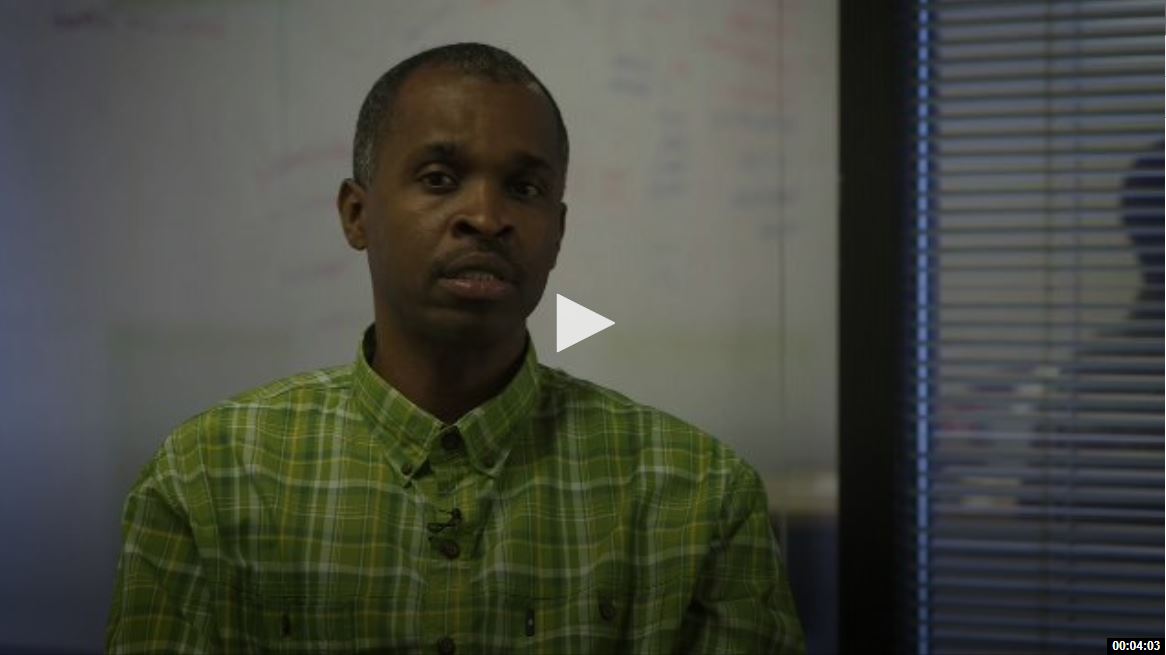
Figure 4: Norman Brown on Project New Opportunity. Joe King, Videographer.
PNO’s Reentry Consultants continue to interact with clients following release. The program model has no formal “end” date, but rather assists, counsels, and encourages each client up to the point that he or she appears to be stabilized within the larger community, with connections to normative social capital institutions in the community, e.g., families and faith communities. As such, the PNO model is concerned with more than recidivism, considered the Holy Grail for measuring success of criminal justice interventions. PNO supports are about acclimation to a world without total control and regimentation, and a world that looks very different after years of incarceration.
Reponses from PNO clients who completed the survey show that emotional support was what they valued most. They considered their Reentry Consultant to offer an understanding “ear” who would listen to concerns and questions without judgment. Seventy-seven percent of respondents cited this role as the greatest assistance to them. Participants believed that having a formerly incarcerated person as one’s guide made a real difference because people who had gone through the experience themselves could understand what they were going through. Almost half of survey respondents said that they most benefited from having a Reentry Consultant who was able to understand the “emotional challenges of reentry.”
While, as noted above, PNO was concerned about more than recidivism, it is hard to have a conversation about criminal justice programs, particularly those that attempt to relax the iron grip of incarceration, without referencing some metric of crime reduction. In its short life as a demonstration project, PNO was unable to track recidivism rates through official data and relied on information from either Reentry Consultants and/or participants themselves. The information, while informal, is encouraging: there were no known incidents or reports of rearrests, violations of the terms of probation supervision, or incarceration from the consultants or participants. PNO appears to have helped people stabilize at least in the initial 3 to 12 month period of transition.
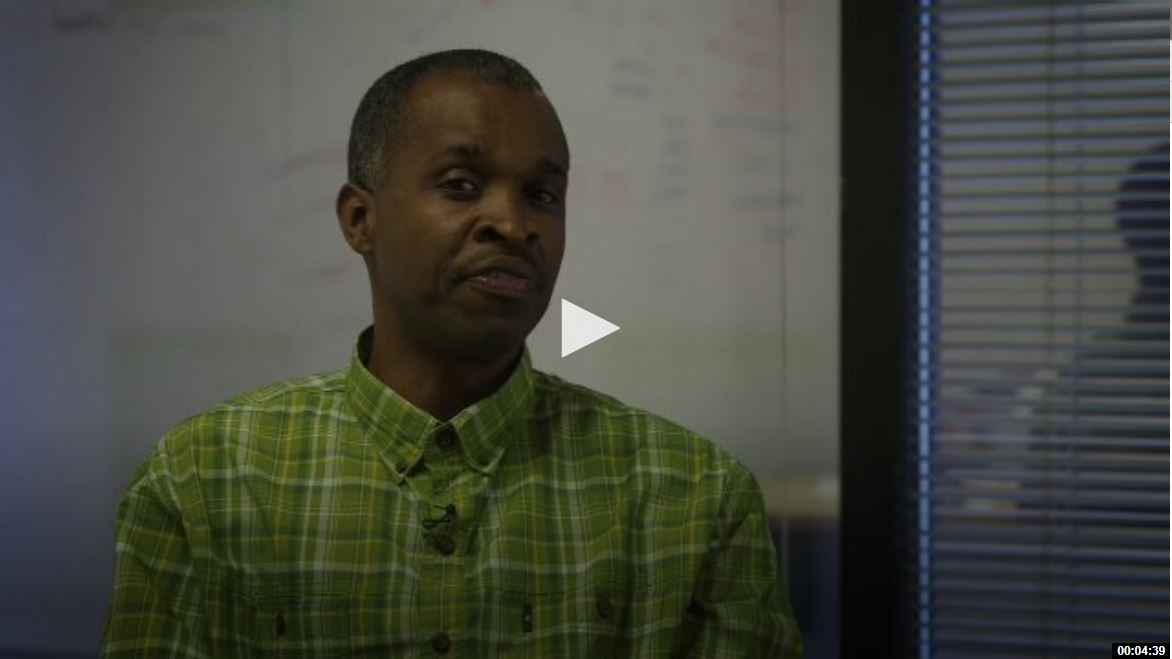
Figure 5: Norman Brown: The gift offered from formerly incarcerated people. Joe King, Videographer.
Reentry and the Limits of Criminal Justice Reform
But leaving prison is not just about refraining from crime. It is about establishing a life in the community. Social supports are important in this broader desistance process. When asked what they thought would be the greatest impediment to their successful reentry, PNO survey respondents eschewed expected impediments such as employment, remaining drug-free, and stable housing and overwhelmingly selected the response: “Nothing, I feel sure that I will never go back to prison.” These perceptions of desistence should not be dismissed as wishful thinking. Perceptions about self-efficacy and the ability to stay out of trouble with the law does impact future offending (Maruna 2001). A program like PNO that can, to some extent, compensate for the absence of normative social connections is particularly important in light of research that shows that such contact helps to reduce recidivism (Naser and La Vigne 2006).
Leaving prison is defined variously as reentry, reintegration, and integration. The choice of word implicates different expectations for the individuals who are leaving prison and the social structures to which they return. Reentry has a more narrow focus—“the process of leaving prison and returning to society” (Travis, Solomon, and Waul 2001, 1). Reintegration implies full, functional, and non-stigmatized connection to normative social institutions, including family, work, and civic engagement. Integration, as referenced by Loïc Wacquant, criticizes much of the current discussion of both reentry and reintegration as ahistorical and nonempirical:
To speak of “pathways of reintegration” . . . disregards the hard fact that there was no integration prior to incarceration [emphasis in original] as evidenced by the social profile of jail detainees in America. . . . How could former prisoners be “re-integrated” [emphasis in original] when they were never integrated in the first place and when there exists no viable social structure to accommodate them outside? How could there be “reentry” when they are enmeshed in a carceral lattice spanning the prison and neighborhoods deeply penetrated and constantly destabilized by the penal state? (Wacquant 2010, 612)
Western raises a similar point when he connects reentry and reintegration to the idea of citizenship, by which he means “a public declaration of equality” (2014, 302). Western asserts that over time, citizenship has come to encompass not only basic civil rights such as voting and free speech, but social welfare rights, such as education and health care. Mass incarceration has perverted the expected role, however imperfectly carried out, of the state as an entity which seeks to reduce inequality to one that increases inequality. Accordingly, for formerly incarcerated people to become full citizens requires not only arrival home, but addressing the conditions of inequality that ensnared them in the first place. The ability of formerly incarcerated people to [re]join society is dependent upon those “insiders of American society” (Western 2014, 305) to recognize that mass incarceration is fundamentally what poverty looks like in twenty-first-century America.
Western and Wacquant sound sobering messages on the efficacy of modest current criminal justice reforms, including reentry, to undo mass incarceration. However, these reforms can at least substantiate that reducing reliance on imprisonment does not jeopardize public safety. Programs like PNO provide evidence that reforms that curtail the time one spends in prison are reasonable, humane, and safe. Further evidence that reducing prison time is not a jail break comes from a 2014 USSC study that showed that people who received a retroactively reduced sentence under the 2007 Crack Cocaine Amendment were no more likely to recidivate, defined by rearrest, than similarly situated incarcerated people who did not receive a reduced sentence. Thirty-four percent of the retroactivity group recidivated within 5 years and 37 percent of the control group recidivated in that time period. In short, sentence reductions of two years did not result in higher recidivism rates.15
Yet criminal justice reforms to date have done little to quell the flood of people entering prison each year, nor do they significantly reduce the draconian period of time spent behind bars. There has been, at best, limited sentencing reforms that would curtail the crimes for which incarceration can be meted out and reduce the amount of time that one could receive if incarcerated. Alternatives to incarceration efforts all too often merely extend the net of social control (Weissman 2009). As a result, there are still 2.3 million incarcerated people in America!
The prison population began to decline in 2010, after four decades of double-, even triple-digit increases. The reductions happened in some, but not all, states and the federal prison system, generating optimism that the end of mass incarceration was within reach. But a more careful look at the data suggests that even without the pendulum swinging back, the current decrease would not undo mass incarceration as defined by Garland (2001) as historically and comparatively atypical. The most recent Bureau of Justice Statistics (Carson 2018) data show a 1.4 percent decrease in state and federal prison population in 2016. At that rate, it would take between 50 and 75 years to cut America’s carceral population by half, the goal of many advocacy reform organizations (Young 2018; Ghandnoosh 2018).
The slow and limited pace of reform is not missed even by those who have benefited from reforms. There are still too many people locked up for too long a time in inhuman conditions. There are still too many communities, particularly communities of color, that have been politically disenfranchised because so many of their members are denied the right to vote. There are still too many families, again in communities of color, who are ripped apart due to the incarceration of a loved one. There are still too many people whose arrival at and exit from prison return them to conditions of overwhelming poverty and inequality. A grant of clemency or the months off of a sentence of 10 years or more, while appreciated by those who receive these benefits, still leaves 2.3 million people incarcerated in America! Real reform results in incarceration rates more closely aligned with international norms, such as the British rate of 148 per 100,000, which at that rate would leave about 425,000 people in prisons. Can we imagine what it will take to get there? Do we have the political strength and will to make this happen?
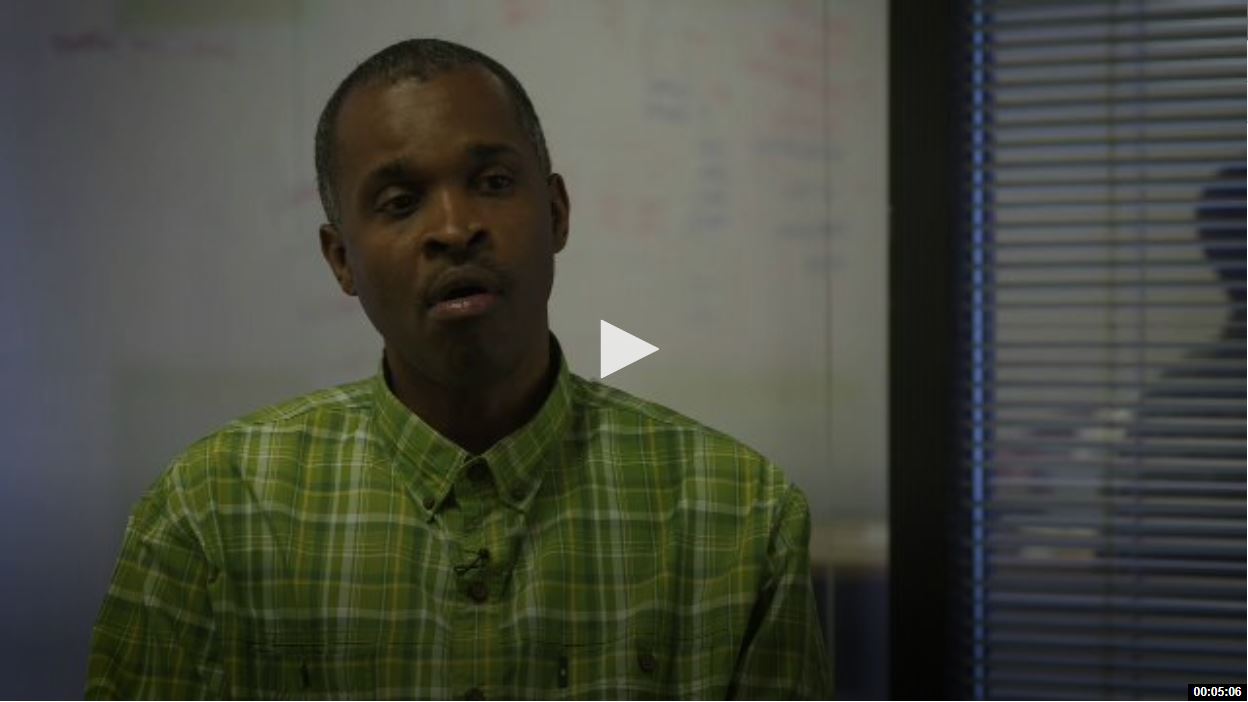
Figure 6: Norman Brown: Beyond clemency—real criminal justice reform. Joe King, Videographer.
Notes
1 Incarceration in this paper refers only to adult prisons run under state or federal jurisdiction. It does not include local jails where people may be serving local sentences or be held in detention prior to trial, nor does it include juvenile facilities.
2 The United States Sentencing Commission (USSC) is a permanent, independent agency within the Department of Justice. It is composed of seven members appointed by the President and confirmed by the Senate. It is charged with developing guidelines or a grid to be used by judges in the sentencing of defendants convicted in federal court, thus limiting their discretion. The principle purpose of the Commission is to establish, review, and recommend amendments to the guidelines.
3 Retroactively reduced sentences took effect November 1, 2014, but pursuant to the Commission’s directive, release of eligible individuals was delayed until November 1, 2015. Moreover, retroactive release was not automatic: judicial approval was required before a person was released. The principle purpose of the Commission is to establish, review, and recommend amendments to guidelines used to determine the length of sentences for people convicted of federal crimes.
4 An additional 40,000 will ultimately be effected by the retroactive application of guideline changes. Release under the Drugs Minus Two revisions was not completely automatic: judges could disapprove release based on disciplinary history while incarcerated and other factors.
5 Other criminal justice reform efforts that occurred during the Obama administration were the Clemency Initiative and the “Smart on Crime” initiative. Through the latter, then-Attorney General Eric Holder directed federal prosecutors to focus on serious crimes and avoid mandatory minimum sentences for more minor criminal cases.
6 This record is exclusive of the blanket clemencies issued by Presidents Gerald Ford and Jimmy Carter to those who refused the draft during the Vietnam War.
7 The federal prison population declined in 2010, the first such decline since the 1970s.
8 Shortly after taking office, Attorney General Jeff Sessions ordered the closing of 16 federal halfway houses, resulting in delayed releases and shorter stays in remaining halfway houses.
9 More than 60,000 people a year are returned to state prison for what is termed “technical violations of parole” rather than the commission of new crimes. About 15 percent of the federal prison population are incarcerated for technical violations of their supervised release. Technical violations include such behaviors as moving one’s residence without permission of a parole office, failing a urine screening, and changing jobs without parole officer approval. About 15 percent of the federal prison population are incarcerated on technical violations.
10 The term “reentry” actually has its origins in John Irwin’s (1970) book The Felon. Irwin is also known as one of the founders of what has come to be known as “convict criminology.”
11 Research has documented the disorientation experienced by people leaving the military, people returning to the United States after years living abroad, and people released from mental hospitals.
12 Examples of peer-led work include recovery communities supporting people grappling with addiction to drugs and alcohol and myriad HIV/AIDS prevention interventions that rely on peers to disseminate health information.
13 As Attorney General, Jeff Sessions has been the leader in opposing even those reforms supported by members of his own party, to the consternation of Senator Grassley (see letter from Stephen E. Boyd, Assistant Attorney General, to Mark Short, Assistant to the President, dated July 12, 2018 (http://www.lisa-legalinfo.com/tag/sessions/). Senator Tom Cotton offered a particularly ham-handed rejection of reform efforts in a speech at the Hudson Institute when he stated, “If anything, we have an under-incarceration problem.” (https://www.hudson.org/research/12505-senator-tom-cotton-s-remarks-on-crime-and-justice-in-america).
14 The survey represents 49 percent of total enrollees. The respondents included 46 who were released to the community and 25 who were still incarcerated. Thirty-five surveys were returned (an overall response rate of 49%), 14 from people now living in the community (30% of the surveys from released people), and 25 from people still incarcerated (84% of the surveys sent to this group). People in the community were harder to reach as they changed residences frequently as they settled into community life. An honorarium was given to every person who completed the survey. People who were still incarcerated had funds posted to their commissary account and people in the community were given a gift card to one of four stores of their choosing.
15 There are no publically available data on the status of the 1,696 people released through the 2014 Clemency Initiative; however, a google search identified only three clemency recipients who have been rearrested.
Works Cited
Carson, E. Ann. 2018. Prisoners in 2016. Washington, D.C.: Bureau of Justice Statistics, US Department of Justice, Office of Justice Programs. http://www.bjs.gov/index.cfm?ty=pbdetail&iid=6187.
Charles Colson Task Force. 2016. Transforming Prisons, Restoring Lives: Final Recommendations of the Charles Colson Task Force on Federal Corrections. Washington, D.C.: Urban Institute. https://www.urban.org/research/publication/transforming-prisons-restoring-lives.
Durose, Matthew R., Alexia D. Cooper, and Howard N. Snyder. 2014. Recidivism of Prisoners Released in 30 States in 2005: Patterns from 2005 to 2010. Washington, D.C.: US Department of Justice, Office of Justice Programs, Bureau of Justice Statistics. https://www.bjs.gov/index.cfm?ty=pbdetail&iid=4986.
Garland, David, ed. 2001. Mass Imprisonment: Social Causes and Consequences. London: Sage.
Ghandnoosh, Nazgol. 2018. Can We Wait 75 Years to Cut the Prison Population in Half? Washington, D.C.: The Sentencing Project. https://bit.ly/2HsSqbx.
Haney, Craig. 2003. "The Psychological Impact of Incarceration: Implications for Post-Prison Adjustment." In Prisoners Once Removed: The Impact of Incarceration and Reentry on Children, Families, and Communities, edited by Jeremy Travis and Michelle Waul, 33–65. Washington, D.C.: Urban Institute Press.
Irwin, John. 1970. The Felon. Berkeley, CA: University of California Press.
Jonson, Chery Lero, and Francis T. Cullen. 2015. "Prisoner Reentry Programs." Crime and Justice 44 (1): 517–575.
Mandela, Nelson. 1995. Long Walk to Freedom: The Autobiography of Nelson Mandela. New York: Little, Brown and Company.
Maruna, Shadd. 2001. Making Good. Washington, D.C.: American Psychological Association.
. 2017. "Desistance as a Social Movement.” Irish Probation Journal 14: 5–20.
Mendelberg, Tali. 2001. The Race Card: Campaign Strategy, Implicit Messages, and the Norm of Equality. Princeton, NJ: Princeton University Press.
Metcalf, Jerry. 2018. “All the Strange, Terrible Things You Get Used to in Prison.” VICE. https://www.vice.com/en_us/article/9kzva3/all-the-strange-terrible-things-you-get-used-to-in-prison.
Naser, Rebecca L., and Nancy G. La Vigne. 2006. "Family Support in the Prisoner Reentry Process: Expectations and Realities." Journal of Offender Rehabilitation 43 (1): 93–106.
Pew Charitable Trusts. 2015. Prison Time Surges for Federal Inmates. A Brief from the Pew Charitable Trusts. http://www.pewtrusts.org/en/research-and-analysis/issue-briefs/2015/11/prison-time-surges-for-federal-inmates.
Simon, Jonathan. 2007. Governing through Crime: How the War on Crime Transformed American Democracy and Created a Culture of Fear. New York: Oxford University Press.
Suellentrop, Chris. 2006. "The Right Has a Jailhouse Conversion." New York Times Magazine, December 24. https://www.nytimes.com/2006/12/24/magazine/24GOP.t.html.
Travis, Jeremy. 2005. But They All Come Back: Facing the Challenges of Prisoner Reentry. Washington, D.C.: Urban Institute Press.
. 2007. “Reflections on the Reentry Movement.” Federal Sentencing Reporter 20 (2): 84–87.
Travis, Jeremy, Amy L. Solomon, and Michelle Waul. 2001. From Prison to Home: The Dimensions and Consequences of Prisoner Reentry. Washington, D.C.: Urban Institute Justice Policy Center.
Trimbur, Lucia. 2009. “’Me and the Law Is Not Friends’: How Former Prisoners Make Sense of Reentry." Qualitative Sociology 32 (3): 259–277.
Wacquant, Loïc. 2009. Punishing the Poor: The Neoliberal Government of Social Insecurity. Durham, NC: Duke University Press.
. 2010. "Prisoner Reentry as Myth and Ceremony." Dialectical Anthropology 34 (4): 605–620.
Weissman, Marsha. 2009. "Aspiring to the Impracticable: Alternatives to Incarceration in the Era of Mass Incarceration." N.Y.U. Review of Law & Social Change 33 (2): 235–269.
Western, Bruce. 2014. "Incarceration, Inequality, and Imagining Alternatives." The ANNALS of the American Academy of Political and Social Science 651 (1): 302–306.
. 2018. Homeward: Life in the Year After Prison. New York: Russell Sage Foundation.
Western, Bruce, and Katherine Beckett. 1999. "How Unregulated Is the US Labor Market? The Penal System as a Labor Market Institution." American Journal of Sociology 104 (4): 1030–1060.
Western, Bruce, and Becky Pettit. 2000. "Incarceration and Racial Inequality in Men's Employment." ILR Review 54 (1): 3–16.





